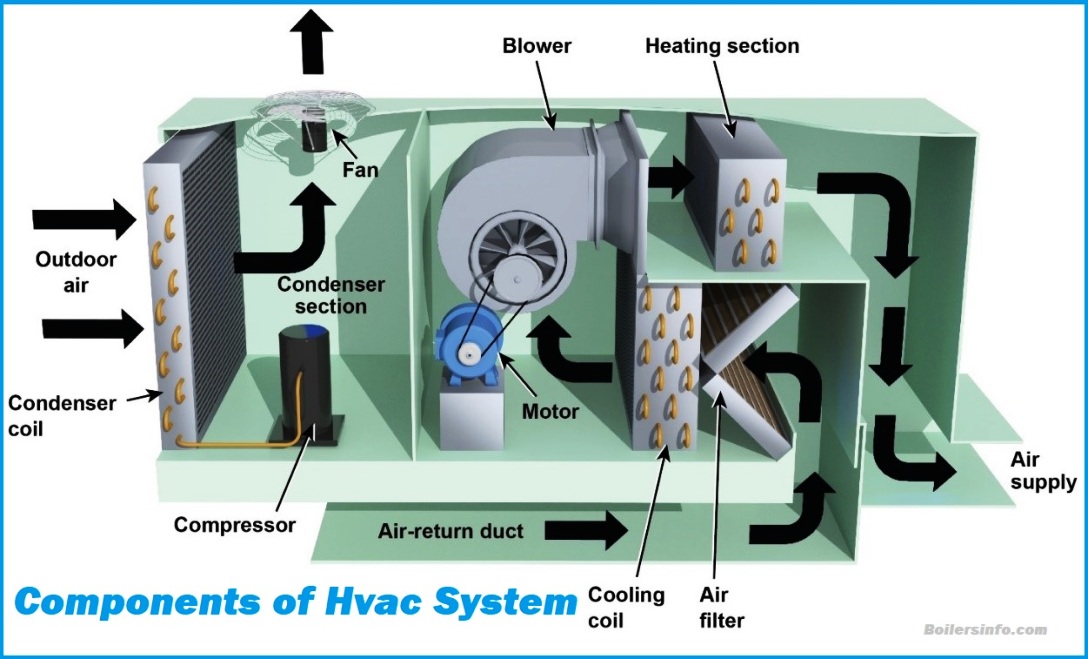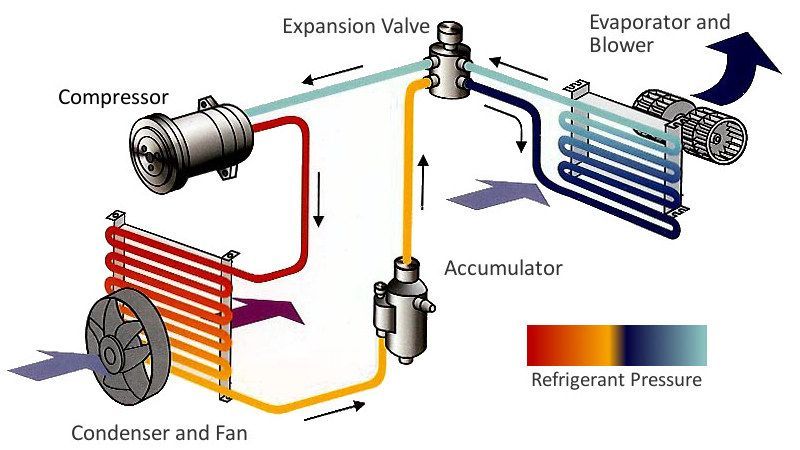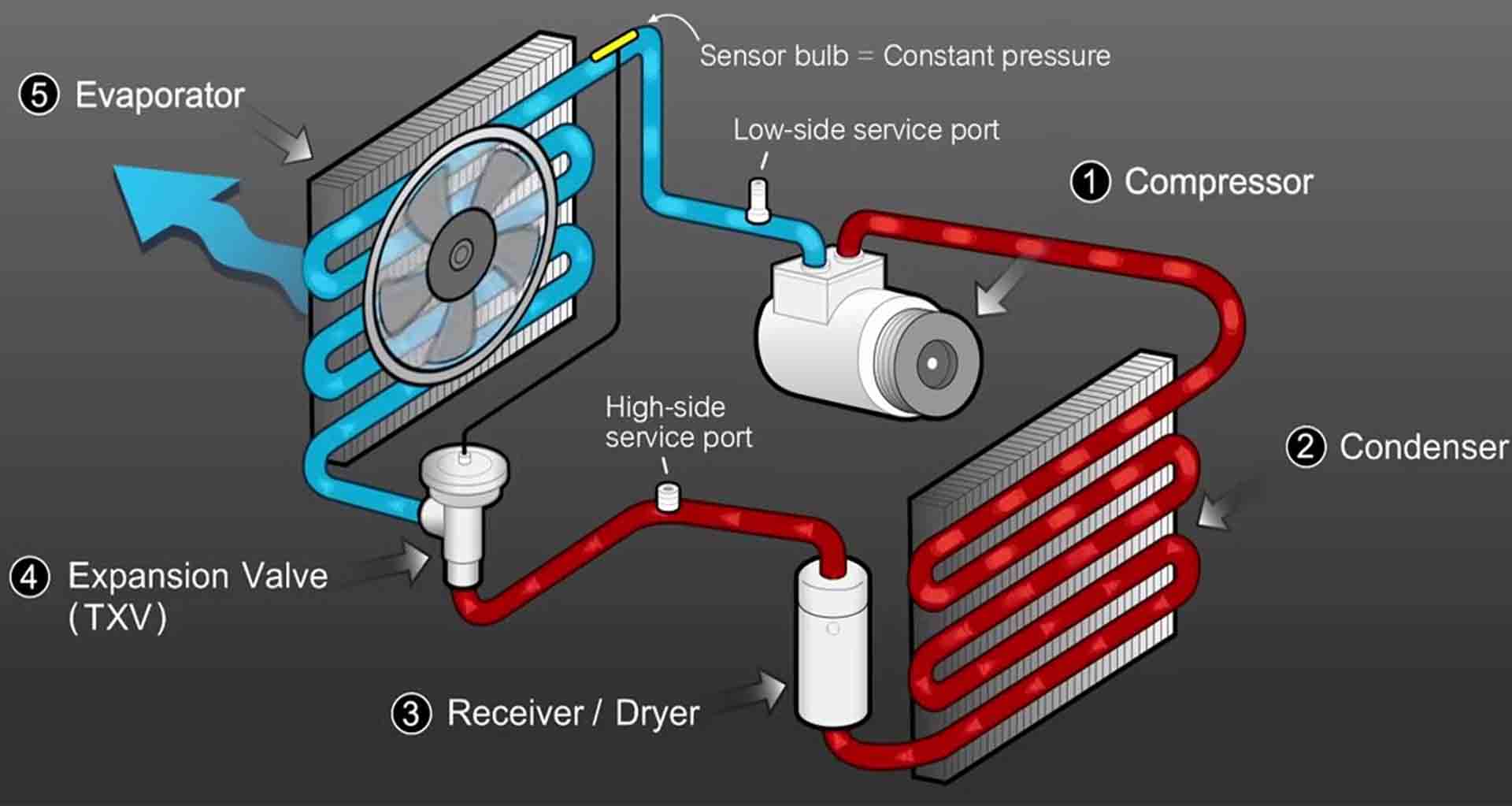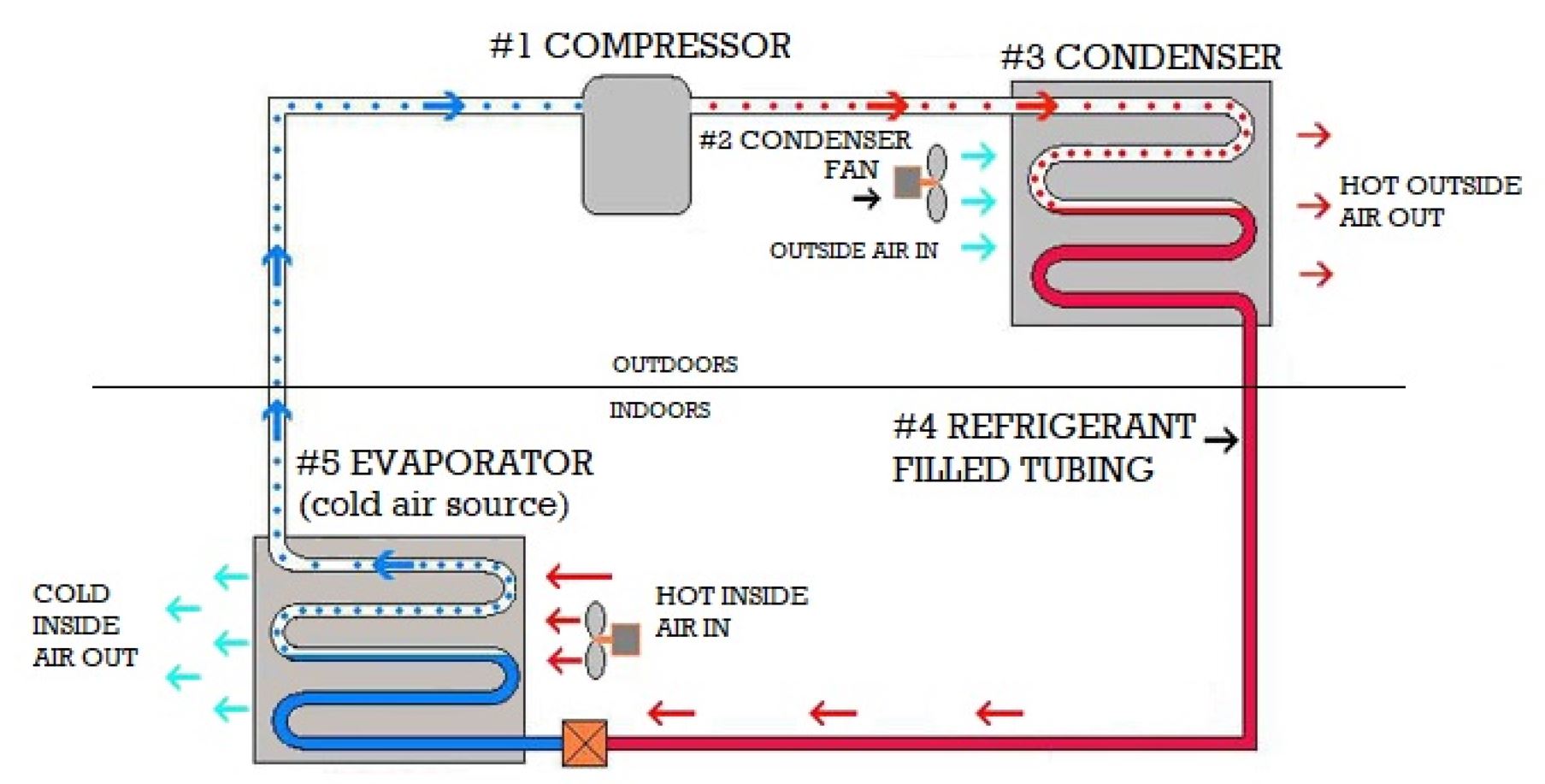Components Of An Air Conditioning System
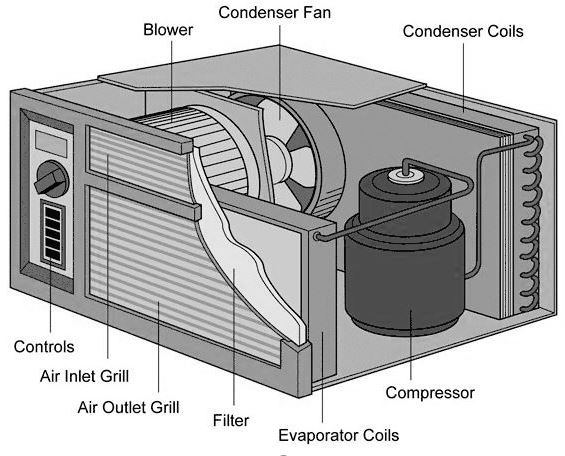
Air conditioning systems are the unsung heroes of modern comfort, quietly maintaining optimal temperatures in homes, offices, and countless other environments. But beyond the cool air lies a complex network of components working in perfect harmony. Understanding these components is fundamental for anyone aspiring to a successful career in the HVAC industry. This article will dissect the anatomy of an air conditioning system, exploring each key element, its function, and its significance for HVAC professionals.
The Core Components: A Deep Dive
At its heart, every air conditioning system, whether a window unit or a large commercial chiller, operates on the same principle: the refrigeration cycle. This cycle involves four primary components:
The Compressor: The Heart of the System
The compressor is arguably the most crucial component. Its job is to compress the refrigerant gas, increasing its pressure and temperature. Think of it as the heart of the system, pumping refrigerant throughout the entire cycle. There are several types of compressors, including reciprocating, rotary, scroll, and centrifugal, each with its own strengths and applications. Selecting the right compressor for a specific application is a critical decision for HVAC engineers. Understanding compressor types and their performance characteristics is a vital skill for HVAC technicians. According to the U.S. Bureau of Labor Statistics, the median annual wage for HVAC technicians and installers was $51,390 in May 2022. However, experienced technicians specializing in complex systems like those with high-efficiency compressors can command significantly higher salaries. Certifications such as NATE (North American Technician Excellence), especially those related to specific compressor technologies, can boost earning potential and career advancement opportunities.
The Condenser: Releasing the Heat
The high-pressure, high-temperature refrigerant gas then flows to the condenser. Here, the refrigerant releases its heat to the outside environment, typically through a fan blowing air across condenser coils. As the refrigerant loses heat, it transitions from a gas to a high-pressure liquid. Condenser efficiency is crucial for overall system performance. Factors like ambient temperature, airflow, and coil cleanliness significantly impact the condenser's ability to reject heat. Regular maintenance, including cleaning the condenser coils, is essential for maintaining efficiency and preventing system breakdowns.
The Expansion Valve (or Metering Device): Controlling Refrigerant Flow
Next, the high-pressure liquid refrigerant passes through the expansion valve, also known as a metering device. This component precisely controls the flow of refrigerant into the evaporator. As the refrigerant expands, its pressure and temperature drop dramatically. Different types of expansion valves exist, including thermostatic expansion valves (TXVs), electronic expansion valves (EEVs), and capillary tubes. Modern systems often utilize EEVs for precise refrigerant control and enhanced efficiency. HVAC technicians specializing in system optimization need a thorough understanding of expansion valve operation and adjustment.
The Evaporator: Absorbing the Heat
Finally, the low-pressure, low-temperature refrigerant enters the evaporator. Located inside the air handler, the evaporator absorbs heat from the indoor air passing over its coils. As the refrigerant absorbs heat, it transitions from a liquid back to a gas. The cold evaporator coils cool the air, which is then circulated throughout the building. The evaporator coil's surface area, airflow, and refrigerant charge all influence its cooling capacity. Technicians must be skilled in diagnosing and addressing issues like frozen evaporator coils or refrigerant leaks in the evaporator.
Beyond the Core: Essential Auxiliary Components
While the four core components form the foundation, several auxiliary components are equally important for the overall operation and efficiency of an air conditioning system:
Refrigerant: The Lifeblood of the System
Refrigerant is the working fluid that circulates throughout the system, absorbing and releasing heat. Different refrigerants have varying properties and environmental impacts. The industry is constantly evolving with the development of more environmentally friendly refrigerants. Older refrigerants like R-22 are being phased out due to their ozone depletion potential, replaced by refrigerants like R-410A and newer alternatives with lower global warming potential. HVAC technicians are required to be certified under EPA Section 608 to handle refrigerants safely and legally. This certification covers proper refrigerant recovery, recycling, and disposal practices. Failing to comply with these regulations can result in significant penalties.
Air Handler: Distributing the Cool Air
The air handler houses the evaporator coil and a blower fan. The blower fan circulates air across the evaporator coil and distributes the cooled air through the ductwork to different areas of the building. Air handlers often include air filters to remove dust and allergens from the air. Proper airflow is critical for system performance, and technicians must be able to diagnose and address issues like clogged air filters, faulty blower motors, or improperly sized ductwork.
Ductwork: The Delivery System
Ductwork is the network of channels that distribute conditioned air throughout the building. Properly designed and insulated ductwork is essential for minimizing energy losses. Leaky or poorly insulated ducts can significantly reduce system efficiency and increase energy bills. Duct leakage testing and sealing are important services that HVAC technicians can provide to improve energy efficiency.
Thermostat: The Control Center
The thermostat is the control center of the air conditioning system, allowing users to set the desired temperature. Modern thermostats are often programmable, allowing for automated temperature adjustments based on time of day or occupancy. Smart thermostats offer even more advanced features, such as remote control via smartphone and learning algorithms that optimize energy usage. HVAC technicians must be familiar with different types of thermostats and their wiring configurations to properly install and troubleshoot them.
Filters: Protecting the System and Improving Air Quality
Filters are installed within the air handler to remove particulate matter from the air stream, protecting the system components from dust buildup and improving indoor air quality. Regular filter replacement is crucial for maintaining system efficiency and preventing breakdowns. Different types of filters offer varying levels of filtration, with some designed to capture allergens and other microscopic particles. Recommending the appropriate filter type for a specific application is an important part of HVAC service.
The Importance of Certifications and Ongoing Training
A career in HVAC requires ongoing learning and professional development. Staying up-to-date with the latest technologies, refrigerants, and industry best practices is essential for success. Certifications like NATE and EPA Section 608 demonstrate competence and professionalism, enhancing career prospects and earning potential. NATE offers certifications in various HVAC specialties, including installation, service, and efficiency analysis. Employers often prioritize candidates with relevant certifications. Moreover, vocational schools and apprenticeship programs provide valuable hands-on training and theoretical knowledge. Many HVAC professionals start as apprentices, working under experienced technicians to gain practical skills. According to projections from the U.S. Bureau of Labor Statistics, employment of HVAC technicians and installers is projected to grow 6 percent from 2022 to 2032, about as fast as the average for all occupations. This growth indicates a continued demand for qualified HVAC professionals.
Career Paths in HVAC: A Spectrum of Opportunities
The HVAC industry offers a wide range of career paths, from entry-level technician positions to specialized roles in design, engineering, and management. Some common career paths include:
- HVAC Technician: Installing, maintaining, and repairing air conditioning systems.
- HVAC Installer: Specializing in the installation of new HVAC systems.
- HVAC Service Technician: Focusing on diagnosing and repairing existing systems.
- HVAC Design Engineer: Designing and specifying HVAC systems for new construction and renovation projects.
- HVAC Sales Engineer: Selling HVAC equipment and services to commercial and industrial clients.
- HVAC Project Manager: Overseeing the installation and commissioning of HVAC systems for large projects.
With experience and advanced training, HVAC technicians can advance to supervisory or management positions, or even start their own businesses. The key to success in the HVAC industry is a combination of technical skills, problem-solving abilities, and a commitment to customer service.
The Future of HVAC: Trends and Innovations
The HVAC industry is constantly evolving, driven by technological advancements and increasing demand for energy-efficient and environmentally friendly solutions. Some key trends shaping the future of HVAC include:
- Smart HVAC Systems: Incorporating sensors, controls, and data analytics to optimize performance and energy efficiency.
- Variable Refrigerant Flow (VRF) Systems: Offering precise temperature control and energy savings in commercial buildings.
- Geothermal Heat Pumps: Utilizing the earth's natural heat to provide efficient heating and cooling.
- Renewable Energy Integration: Combining HVAC systems with solar power and other renewable energy sources.
Staying abreast of these trends and embracing new technologies will be crucial for HVAC professionals seeking to thrive in the years to come. The HVAC industry offers a rewarding and challenging career path for those who are passionate about technology, problem-solving, and making a positive impact on the environment.

